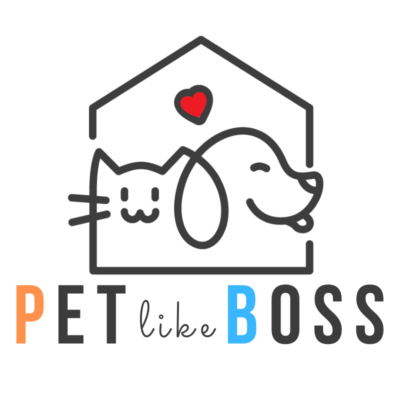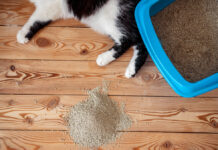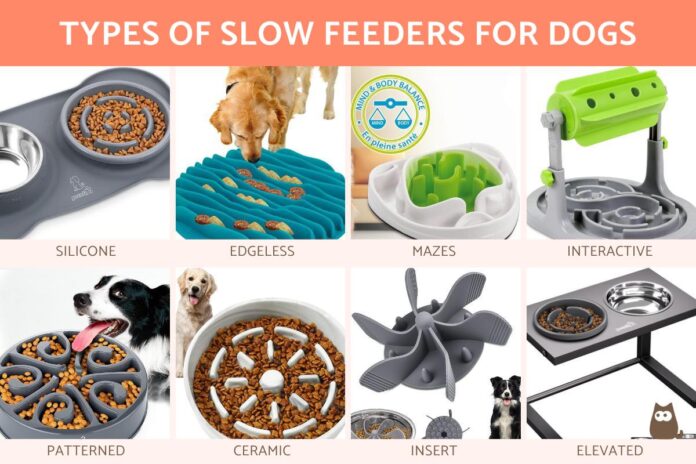If you’ve ever watched your dog inhale their food like a vacuum cleaner, you might have wondered why use a slow feeder for dogs. These innovative feeding solutions are becoming increasingly popular among pet parents, and for good reason. As a pet enthusiast and writer at Pet like boss, I’m excited to share why these feeding tools are a must-have for many furry friends.
The Growing Concern of Fast Eating in Dogs
Fast eating isn’t just a quirky habit – it’s a serious issue that can lead to various health problems in our four-legged companions. If you’re looking for more detailed information about dog behavior and health, check out our comprehensive dog care guide.
What Exactly is a Slow Feeder?
A slow feeder is a specially designed food bowl with built-in obstacles, ridges, or mazes that make it harder for dogs to gulp their food. These bowls transform mealtime from a race into a engaging puzzle-solving activity, promoting healthier eating habits through behavioral enrichment.
Top Reasons to Use a Slow Feeder for Dogs
1. Prevents Bloat and Digestive Issues
- Reduces risk of gastric dilatation-volvulus (GDV)
- Minimizes choking hazards
- Helps with better digestion
2. Mental Stimulation
- Provides puzzle-like challenges
- Keeps dogs engaged during mealtime
- Reduces boredom
3. Weight Management
- Promotes slower eating
- Helps with portion control
- Improves food satisfaction
The Science Behind Slow Feeders
When we consider why use a slow feeder for dogs, the science is pretty clear. These devices work by:
- Forcing dogs to eat around obstacles
- Increasing eating time by 5-10 times
- Promoting better chewing and digestion
Common Misconceptions About Slow Feeders
Myth 1: “My Dog Won’t Like It”
Most dogs actually enjoy the challenge! It taps into their natural foraging instincts.
Myth 2: “It’s Just a Fancy Bowl”
Slow feeders are actually therapeutic feeding tools designed with specific health benefits in mind.
Choosing the Right Slow Feeder
Consider These Factors:
- Size of your dog
- Face shape (especially important for brachycephalic breeds)
- Material durability
- Difficulty level
- Ease of cleaning
Tips for Introducing a Slow Feeder
- Start gradually
- Use positive reinforcement
- Monitor progress
- Be patient during adjustment
Maintenance and Care
To keep your slow feeder effective and hygienic
- Clean after each use
- Check for wear and tear
- Replace if damaged
- Consider having a backup
Real-Life Success Stories
Many pet parents report significant improvements after introducing slow feeders:
“My Lab used to finish his meal in 30 seconds flat. Now it takes him 10 minutes, and his digestion has improved dramatically!” – Sarah, dog mom
When to Be Cautious
While slow feeders are generally safe. consult your vet if your dog
- Has dental issues
- Shows signs of frustration
- Has specific medical conditions
The Bottom Line
Understanding why use a slow feeder for dogs can literally be a life-saver for some pets. These simple yet effective tools can transform mealtimes from a potential health hazard into an enriching experience.
FAQs About Slow Feeders
Are slow feeders suitable for all dogs?
Most dogs can benefit from slow feeders, but some may need specific designs based on their size and facial structure.
How long should it take my dog to finish a meal?
Ideally, 10-15 minutes is a healthy eating duration.
Can puppies use slow feeders?
Yes, but start with simpler designs and supervise initial use.
Expert Tips
- Rotate between different slow feeder designs to maintain interest
- Use them for wet and dry food
- Consider multiple feeders for multi-dog households
- Monitor your dog’s progress and adjust as needed
Final Thoughts
Investing in a slow feeder is more than just buying another pet accessory – it’s a commitment to your dog’s health and well-being. Whether you have a speed-eating champion or just want to provide more mental stimulation during meals, a slow feeder could be the perfect solution for your furry friend.
Remember, every dog is unique, so what works for one might not work for another. The key is to be patient and consistent while finding the right feeding solution for your pet. With proper introduction and use, a slow feeder can become an invaluable tool in your pet care arsenal.












